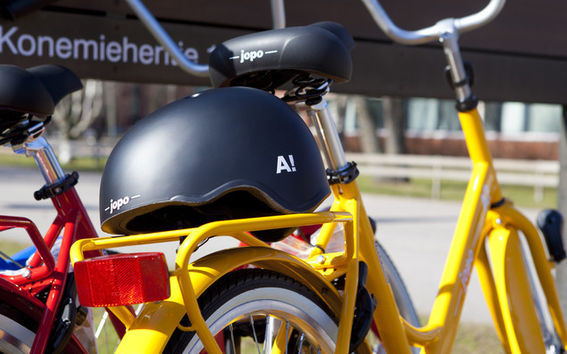Otaniemi is being developed into a new kind of city district

The campus area is being populated and compacted to the neighbourhood of the metro station to be opened in 2016. A strong driver for the development of the area is self-sufficiency in energy and freedom from emissions.
Otaniemi is projected to become a genuine and living city centre, and, to achieve that, close cooperation is taking place with the City of Espoo as well as with several universities and companies. The turmoil of changes will leave the core sector of the campus planned by Alvar Aalto unchanged, but housing for both students and other city dwellers will be built at its periphery. Otaniemi expects to attract 7,500 new inhabitants, who will be encouraged, with the help of new traffic arrangements, to forsake their cars, use public transport and walk and cycle.
- Otaniemi has lacked a meeting place for people. The plaza forming between the metro station and the Väre building and the current Undergraduate Centre will now assume that role. A strong and visible action to promote carless campus is the cutting off of Otaniementie by Otakaari 1 and the Undergraduate Centre and changing the space into a pedestrian area, Aalto University's Vice President Antti Ahlava tells.
Amidst all that construction, the amount of the university's own space can be reduced by up to 25 percent by making the space use more efficient and by diversifying it.
400 solar panels to be deployed in October
In future, energy in the campus area will be produced, more and more, from the sun, wind and heat deep within the earth. An important aspect in the examination of emission-free energy alternatives has been the cooperation with the City of Espoo, allowing us to examine alternative energy solutions building by building.
So far, the most extensive solar energy solution in Otaniemi has been the solar electricity system built on the roof of Maari Building. The solar power plant consists of about 400 solar panels, and its estimated annual power generation will be 90 MWh. Production of solar energy at Maari Building will start in October. Solar panels are also to be installed on the roof of Dipoli.
A geothermic power plant project to be realized in cooperation with energy companies will drill to the depth of seven kilometres into Espoo's bedrock. The objective is to use geoheat to heat the water fed into the depths, lift the hot water up along a parallel hole and then channel the heat created into the district heating network. It is Finland's first pilot thermal power plant utilizing geothermal energy at an industrial scale and aiming at 40 MW power generation capacity. Once the thermal power plant is completed in 2017, it is expected to generate 10 percent of Espoo's district heat requirements.
Photo: Mikko Raskinen
Read more news

A! Walk-Nature connection: Walk, pick, discuss
The afternoon adventure on Lehtisaari offered more than just a walk in the forest; it sparked conversations about renewed appreciation for the simple pleasures of life and the beauty of the Finnish wilderness...
Campus for people, plants and pollinators
The Otaniemi campus nature is managed with respect to biodiversity and the characteristic species of habitats.
Key Skills for Sustainability Experts: Collaboration and Communication
As industries increasingly focus on sustainability, the demand for sustainability expertise is growing. But what specific skills do employers seek in sustainability experts?